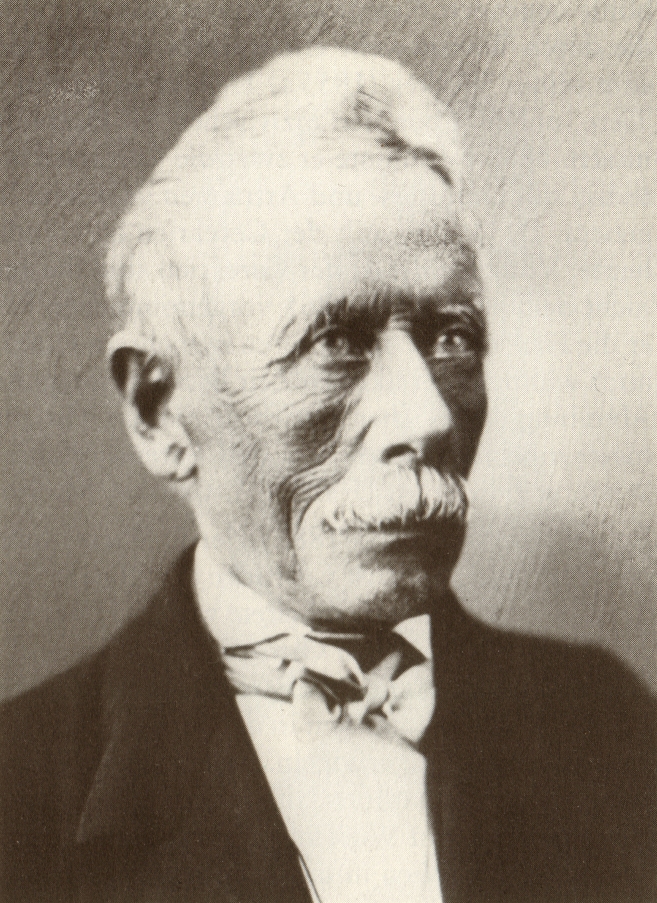|
Aspidogaster Limacoides
''Aspidogaster limacoides'' is a species of the trematodes in the family Aspidogastridae. Distribution Distribution of ''Aspidogaster limacoides'' include: * Austria - since 2001 Hosts Hosts of ''Aspidogaster limacoides'' include: * ''Radix balthica'' * ''Barbus barbus'' References External links Aspidogastrea Animals described in 1835 {{trematode-stub ... [...More Info...] [...Related Items...] OR: [Wikipedia] [Google] [Baidu] |
Karl Moriz Diesing
Karl (Carl) Moriz (Moritz) Diesing (16 June 1800, in Krakow – 10 January 1867, in Vienna) was an Austrian naturalist and zoologist, specializing in the study of helminthology. He studied medicine at the University of Vienna, earning his doctorate in 1826. Afterwards, he served as an assistant to botanist Nikolaus Joseph von Jacquin, later working as an intern at the ''Hof-Naturalien-Cabinet'' (from 1829). In 1836 he became a curator of the zoological collections. In the late 1840s, he began to suffer from serious eye problems, and shortly afterwards experienced permanent blindness. His principal works include ''Systema Helminthum'' (2 vols., 1850–1851), and ''Revision der Nematoden'' (1861). In his paper "''Versuch einer monographie der Gattung Pentastoma''" (Ann. Wien Mus. Naturges. 1836, 1–32), he was the first to establish the distinct nature of the Pentastomida, placing them in a new group which he called Acanthotheca. The genera ''Diesingia'' and ''Diesingiella'' < ... [...More Info...] [...Related Items...] OR: [Wikipedia] [Google] [Baidu] |
Aspidogastridae
Aspidogastridae is a family of trematodes Trematoda is a class of flatworms known as flukes. They are obligate internal parasites with a complex life cycle requiring at least two hosts. The intermediate host, in which asexual reproduction occurs, is usually a snail. The definitive host ... in the order Aspidogastrida. Genera *Subfamily Aspidogastrinae Poche, 1907 **'' Aspidogaster'' Baer, 1827Baer, K. E. (1827). Beiträge zur Kenntnis der niedern Thiere. ''Nova Acta Academiae Caesareae Leopoldino-Carolinae Naturae Curiosorum'', 13, 523–762. **'' Lobatostoma'' Eckmann, 1932Eckmann, F. (1932). Über zwei neue Trematoden der Gattung ''Aspidogaster''. ''Zeitschrift für Parasitenkunde'', 4, 395–399. **'' Lophotapsis'' Looss, 1902Looss, A. (1902). Über neue und bekannte Trematoden aus Seeschildkröten. Nebst Eröterung zur Systematik und Nomenclatur. ''Zoologischer Jahrbücher, Abreilung zür Systematik, Geographie, und Biologie der Tiere'', 16, 411–894. **'' Multicotyle' ... [...More Info...] [...Related Items...] OR: [Wikipedia] [Google] [Baidu] |
Annalen Des Naturhistorischen Museums In Wien '', mathematical journal
{{disambig ...
''Annalen'' may refer to: * ''Annalen der Physik'', a physics journal * ''Crell's Annalen'', a chemistry journal * ''Liebigs Annalen'', a chemistry journal * ''Mathematische Annalen ''Mathematische Annalen'' (abbreviated as ''Math. Ann.'' or, formerly, ''Math. Annal.'') is a German mathematical research journal founded in 1868 by Alfred Clebsch and Carl Neumann. Subsequent managing editors were Felix Klein, David Hilbert, ... [...More Info...] [...Related Items...] OR: [Wikipedia] [Google] [Baidu] |
Radix Balthica
''Radix balthica'', common name the wandering snail, is a species of air-breathing freshwater snail, an aquatic pulmonate gastropod mollusk in the family Lymnaeidae, the pond snails.Neubauer, Thomas A.; Rosenberg, G.; Gofas, S. (2014). Radix balthica (Linnaeus, 1758). In: MolluscaBase (2016). Accessed through: World Register of Marine Species at http://www.marinespecies.org/aphia.php?p=taxdetails&id=248264 on 2017-01-10 Taxonomy The taxonomic status of certain species in the genus ''Radix'' has been disputed. Remigio (2002) reported sequence divergence within the 16S mitochondrial gene of ''Radix peregra'' and '' Radix ovata''. Furthermore, the shell morphology and alloenzyme data indicated that ''Radix peregra'' and ''Radix ovata'' are distinct. In contrast, Bargues et al. (2001) considered on the basis of ITS-2 sequence analysis, that ''R. peregra'', ''R. ovata'', and ''R. balthica'' are in fact a conspecific species. Distribution All of eastern Europe to western Siber ... [...More Info...] [...Related Items...] OR: [Wikipedia] [Google] [Baidu] |
Barbus Barbus
The common barbel, ''Barbus barbus'', is a species of freshwater fish belonging to the family Cyprinidae. It shares the common name 'barbel' with its many relatives in the genus ''Barbus'', of which it is the type species. In Great Britain it is usually referred to simply as the barbel; similar names are used elsewhere in Europe, such as ''barbeau'' in France and ''flodbarb'' in Sweden. The name derives from the four whiskerlike structures located at the corners of the fish's mouth, which it uses to locate food. Distribution and habitat ''B. barbus'' is native throughout northern and eastern Europe, ranging north and east from the Pyrénées and Alps to Lithuania, Russia and the northern Black Sea basin. It is an adaptable fish which transplants well between waterways, and has become established as an introduced species in several countries including Scotland, Morocco and Italy. Although barbel are native to eastern flowing rivers in England, they have historically been transloca ... [...More Info...] [...Related Items...] OR: [Wikipedia] [Google] [Baidu] |
Aspidogastrea
The Aspidogastrea (Ancient Greek: ' “shield”, ' “stomach/pouch”) is a small group of Trematoda, flukes comprising about 80 species. It is a Subclass (biology), subclass of the Trematode, trematoda, and sister group to the Digenea. Species range in length from approximately one millimeter to several centimeters. They are parasites of freshwater and ocean, marine molluscs and vertebrates (Chondrichthyes, cartilaginous and Actinopterygii, bony fishes and turtles). Maturation may occur in the mollusc or vertebrate host. None of the species has any economic importance, but the group is of very great interest to biologists because it has several characters which appear to be archaic. Morphology Shared characteristics Shared characteristics of the group are a large ventral disc with a large number of small Pulmonary alveolus, alveoli ("suckerlets") or a row of suckers and a Tegument (Helminth), tegument with short protrusions, so-called "microtubercles". Larval physiology Larv ... [...More Info...] [...Related Items...] OR: [Wikipedia] [Google] [Baidu] |
